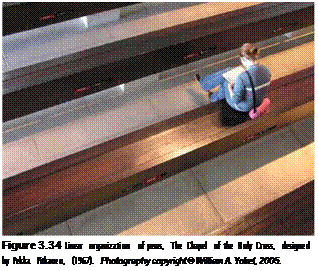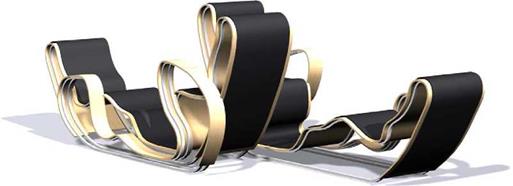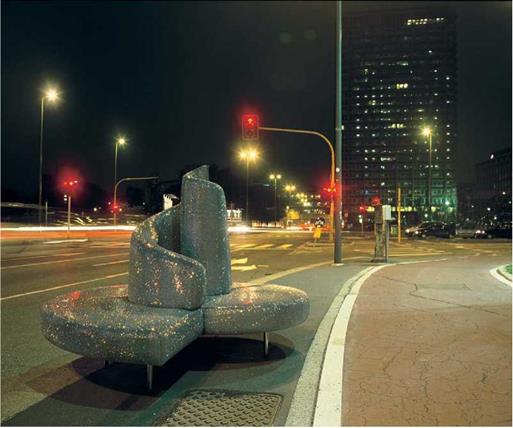 |
 |
Lines are made by connecting two or more points and generally are conceived as being straight (Figure 3.34), but they also curve, warp, and transform, as illustrated in Bookworm, designed by Ron Arad (Figure 3.35). Every line has an underlying spatial structure. The eye follows lines from beginning points to intersecting endpoints. Sinusoidal linear characteristics are often expressed through the edges, seams, and planes of furniture. DU (Figure 3.36) integrates upright and reclining postures and relies on its sinusoidal edges and juxtaposing planar surfaces to visually express linear movement.
 |
 |
Radial
Sociofugal spaces are perceived as outward-oriented spaces. Sociofugal is a term coined by Edward T. Hall to describe the perception of space that radiates outward from an implied or marked center. The Tatlin settee is designed to visually orient users outward into space (Figure 3.37). Freely inspired by Tatlin’s Tower, the sofa has a molded spiral that radiates outward into space. The base of the sofa is made from multilayered wood, the supports are metal, and polyurethane foam padding is defined by an inner molded steel structure. Radial spaces are distinct from inwardly focused, centralized, sociopetal spaces.2
|




